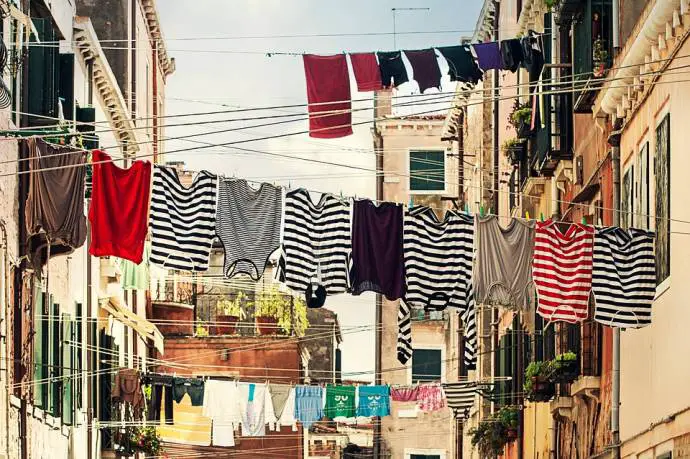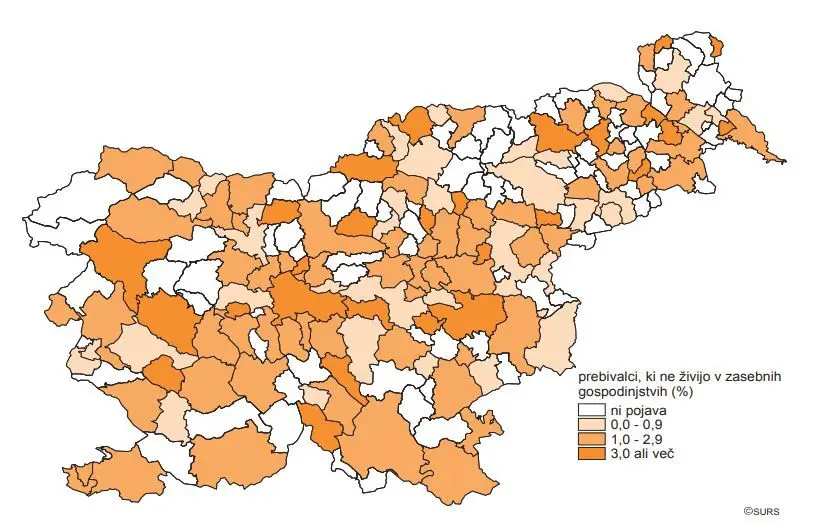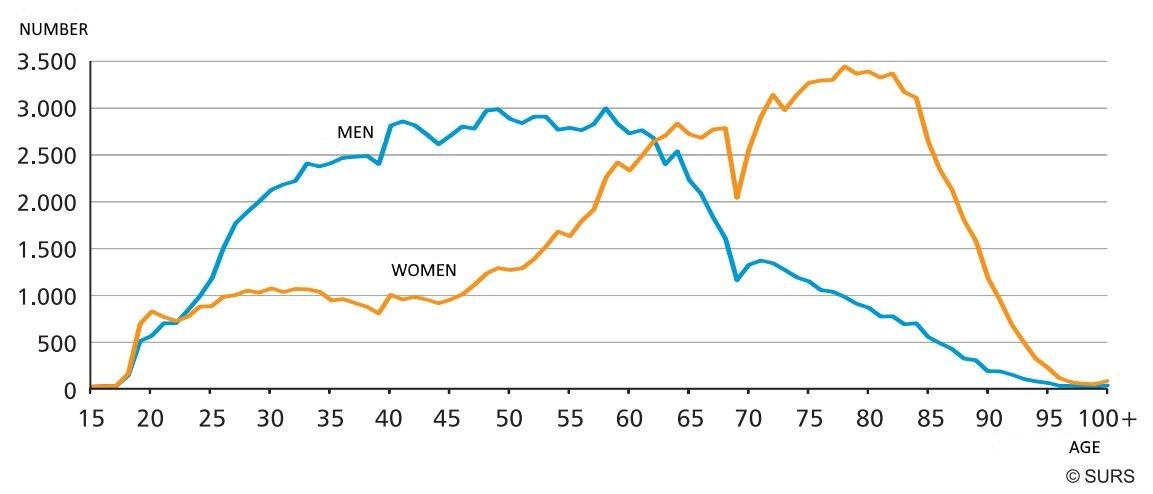February 1, 2018
Statistical data from the most recent census, carried out in 2015, show that the majority of households in Slovenia, that is about 56%, consist of a single-family unit, about 5% households are composed of multifamily units and 32,6% of households consist of a single household member.
Not everyone, however, lives in a privately run household. About 2% of the population lives either in group households (student dormitories, retirement and other institutionalized dwellings) or they are part of “special household” statistics, meaning they are registered with a certain office, usually a social service and protection center, but do not really live there. Homeless people, for example, are included into this last category of “special households”, which has, since the last census in 2006 more than doubled, with almost 3000 people registered at 80 of such addresses in 2015.
Map: percentage of population living in non-privately run households
About 30% of all members of group and special households live in Ljubljana, 2/3 of which live in student dormitories.
Privately run households, which constitute the large majority of households in Slovenia, can be broken down to (single and multi-) family households and non-family households which can be further divided to single member households and multiple member non-family households. Only about 2% of households belong to the latter category, that is a group (usually of two people only) of individuals that do not constitute a family (brothers and sisters, grandparent living with grandchildren, other unrelated people living together).
As already mentioned at the beginning of this text, the largest percentage of households (56%) consists of single family units. But what constitutes a family in this context? According to SURS, a family is either composed of a couple (with or without children) or a parent with children (who live at home and have not formed their own families yet). Many types of families arise from such a definition, and frequency of each type is as follows:
Multifamily households, which account for 4,6% of all households in Slovenia, are usually those of three generations living under one roof, although if containing only one grandparent instead of both this counts as an extended single-family household, and not multifamily household any more. About 5% of all households belong to this category.
Finally, a very high percentage, 32.6%, are single member households, meaning one third of all households in Slovenia consist of people who are living alone. If these numbers are broken down by age and gender we get the following picture:
While the gender representation of people living alone below the age of 25 is more or less equal, things change drastically from here on, with men dominating the numbers in the working age category that ends around retirement age, in the early sixties, when women catch up with men and then exceed their numbers by three times at the age of 76, with five times more women than men living alone at the age of 87.
To understand this phenomenon we must remember that every second out of all of the men living alone was single, while a large portion of those, living alone but married, were migrant workers with families living in their country of origin. On the other hand, 40% percent of women living alone at the age of 65 were widows, with the percentage rising steadily with their age, reaching 70% at the age of 75 (11% of those living alone at the age of 65 or more have never been married). This is mostly attributed to the fact that women live longer (in Slovenia life expectancy for women is slightly under 84, and slightly under 78 for men) hence the rising numbers of widows living on their own in their late age.

Iris Apfel, age 90, Youtube screenshot









